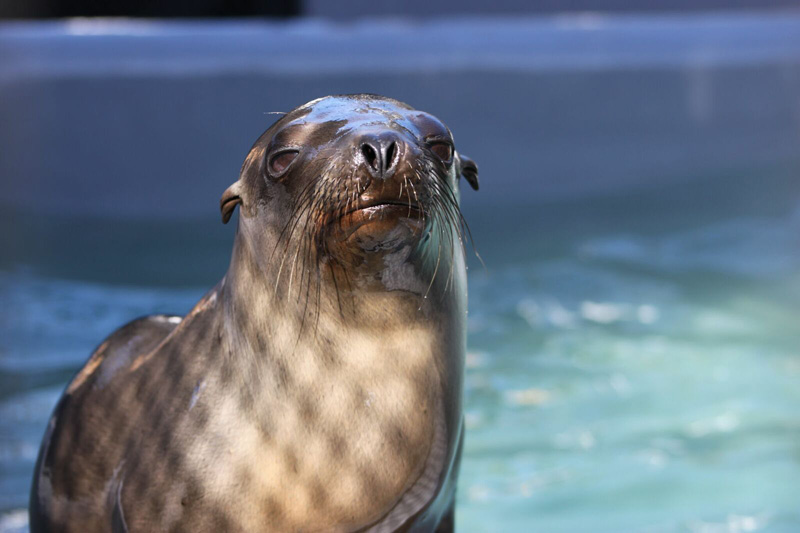
Just resting: The sea lion, ormalicknamed “Rubbish” was found under this car. It took this police officer another 20 minutes to find it.
The Marine Mammal Center confirms the rescue of a California sea lion pup this morning in the Marina neighborhood of San Francisco. Concerned members of the public called the Center this morning to report a sea lion hiding under a car at the corner of Marina Blvd and Divisadero St. San Francisco Police Department was on the scene assisting in keeping the animal out of harm’s way until Center personnel arrived.
At approximately 7am this morning, trained rescuers from The Marine Mammal Center, assisted by SFPD officers, were able to rescue the animal. The sea lion was put into a carrier and transported to The Marine Mammal Center in the Marin Headlands for assessment and rehabilitation.
Upon arrival at the Center, Dr. Shawn Johnson, Director of Veterinary Science, determined that the pup had previously been in the care of the Center and named “Rubbish” by the member of the public who initially reported him. Rubbish was rescued by the Santa Barbara Marine Mammal Center on February 8 and brought to The Marine Mammal Center for care.
Rubbish was eight months old and weighed just 30 pounds when he was rescued. Veterinary staff and volunteers at the Center treated him for pneumonia and malnutrition, and helped return him to a healthy weight. After gaining 17 pounds, Rubbish was released at Point Reyes National Seashore on March 23, 2015.
Rubbish is one of thousands of California sea lion pups that have stranded along the coast of California in 2015. Experts say that warm waters along the West Coast have affected food availability for nursing sea lion mothers and newly weaned pups.
After spending 5 weeks on his own, Rubbish lost approximately 17 pounds. Veterinary staff will do an exam to see if he has any underlying issues to cause him to restrand. On average, fewer than 20 rehabilitated animals treated at The Marine Mammal Center restrand each year.
Ocean experts state that fish stocks have increased north of San Francisco, so the Center is confident that the majority of the animals released from our rescue range have a good chance of finding food and being a productive member of the ecosystem.
As the world’s largest rehabilitation facility, The Marine Mammal Center continues to respond to stranded California sea lion pups every day. As of April 30, 2015, we have responded to 927 California sea lions and currently have 122 sea lions in our care.
In the first four months of 2015, we have rescued more animals than we rescued during the entirety of 2014. This includes northern elephant seal and Pacific harbor seal pups, which are arriving in numbers that are normal for the season at this point.
We have successfully released 159 healthy California sea lions back to the wild since January 1, 2015. In addition to providing life-saving nutrition and treating any secondary infections, we also ensure that every animal released has the necessary life skills to compete for fish in the wild. These means assessing and, if necessary, teaching each individual patient.
Upon release, these animals are at an age in which they would naturally be able to survive on their own, in addition to being in much better body condition. The primary release site for these young sea lions is Point Reyes National Seashore, a location that gives them the best chance at finding suitable food sources.
However, the magnitude of the crisis puts tremendous stress on all resources of this nonprofit organization. “What’s scary is that we don’t know when this will end,” says Dr. Shawn Johnson, Director of Veterinary Science at The Marine Mammal Center.
If warmer waters along the coast persist, causing this current sea lion crisis to continue, the focus must shift to long-term solutions, addressing the three primary stressors to our ocean environment: overfishing, pollution and global warming.
“We know everything is connected—a change in the winds is leading to thousands of sea lions stranding on the beach,” Johnson says. “It’s all the more reason we should be paying close attention to the fate the sea lions, a top predator in the ocean.”

